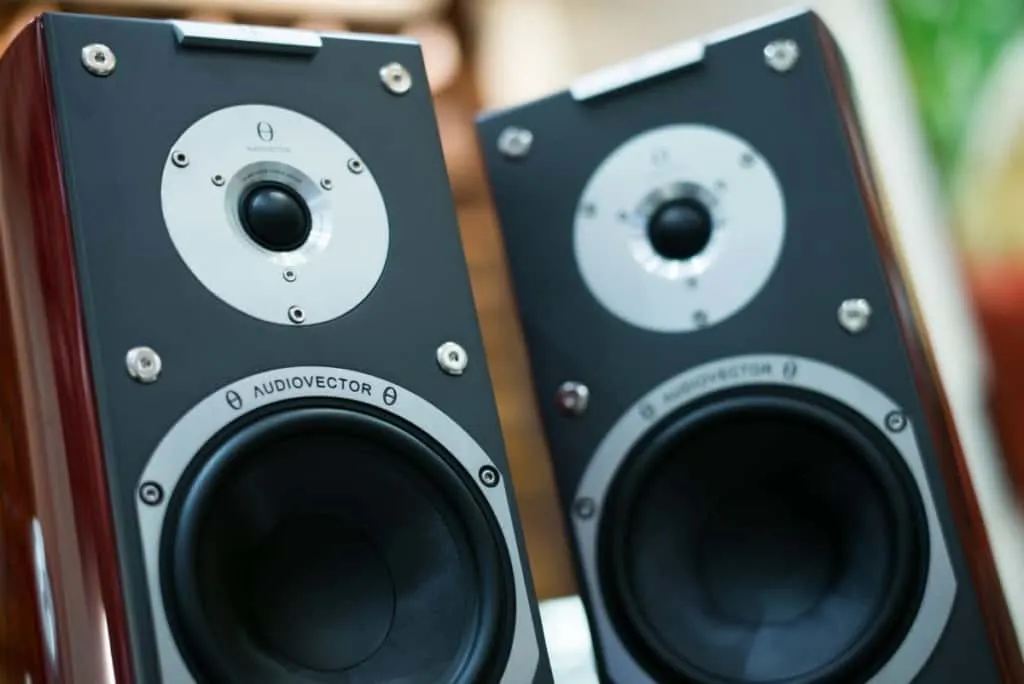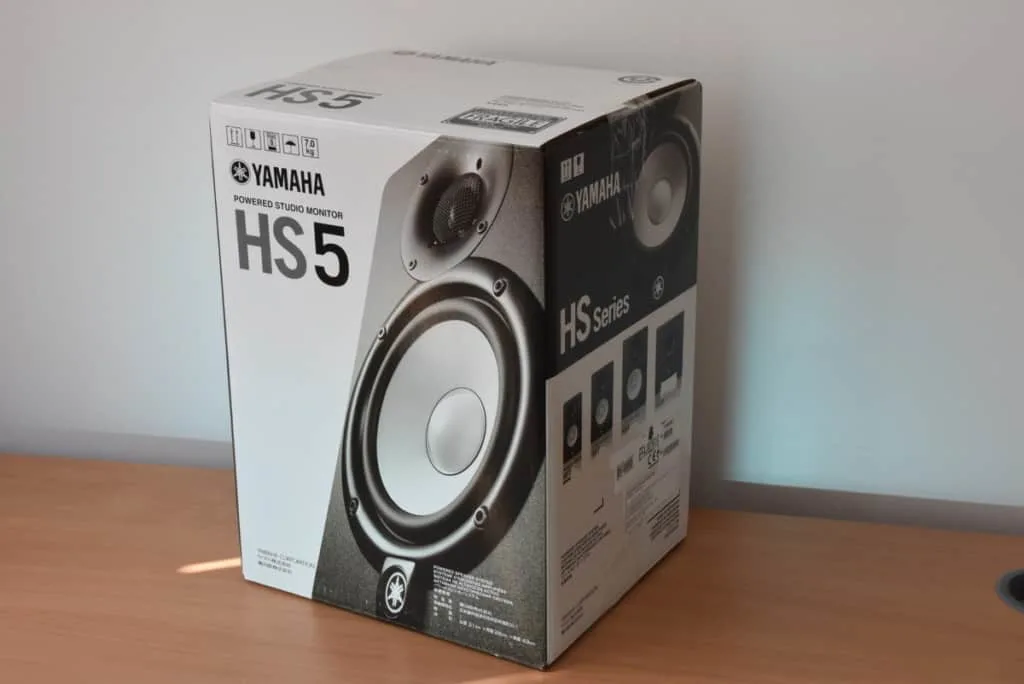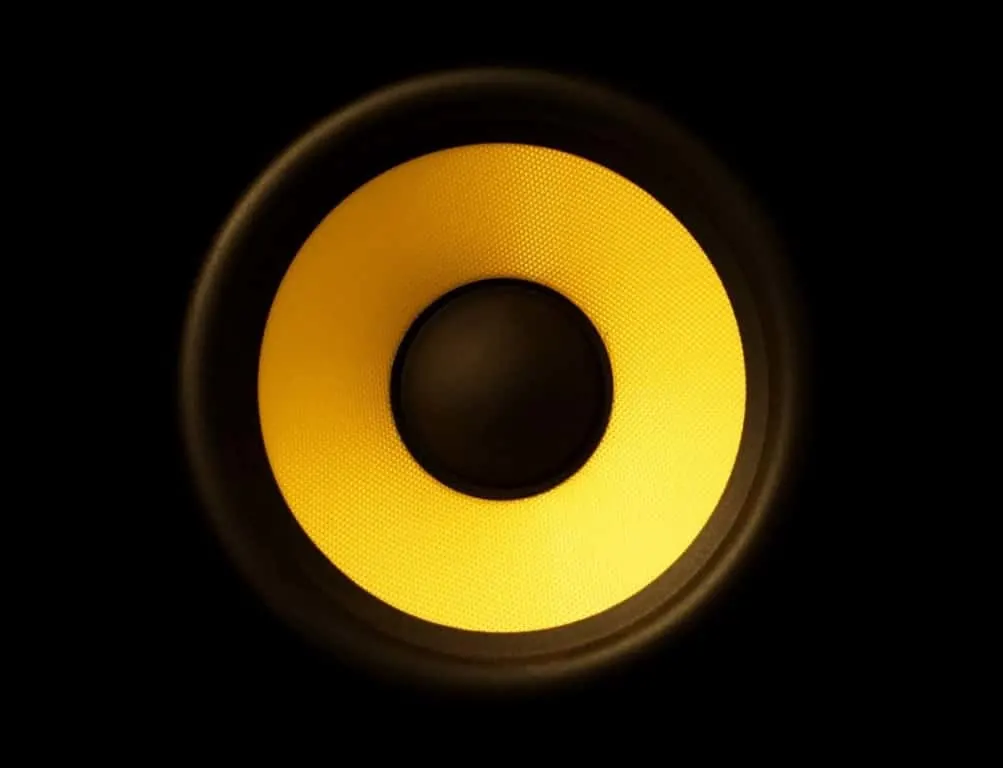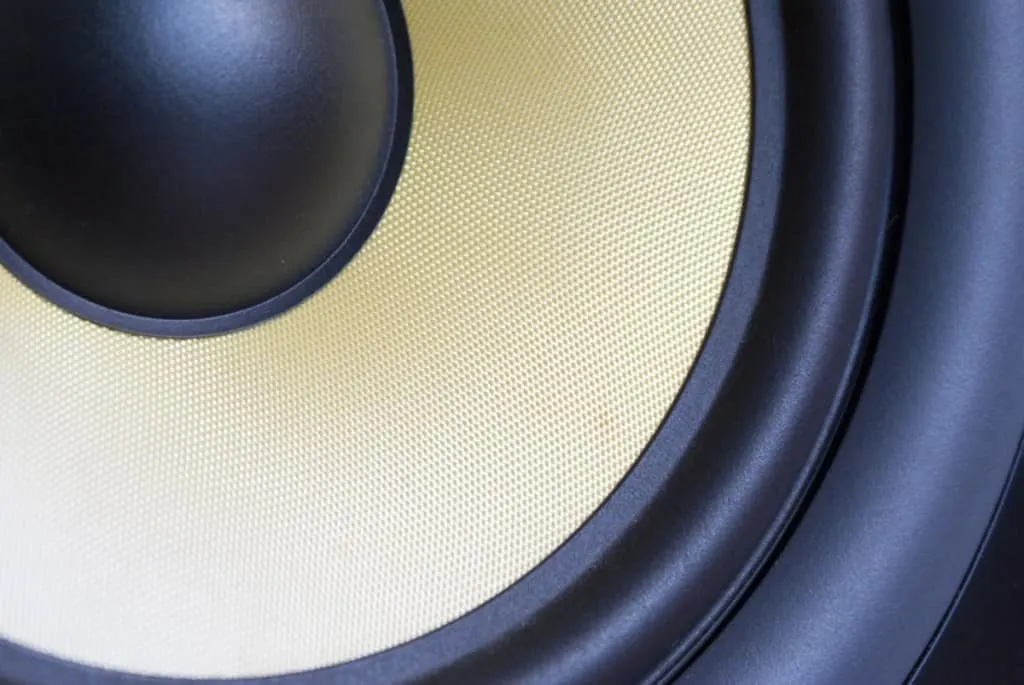Studio monitors are great for having a clear, unbiased, and flat idea of what you have just recorded.
This is, perhaps the main reason why people who work in music production spend thousands of dollars in monitoring equipment (yeah, good headphones too). But which is the best way to make your investment pay off in the best possible manner?
Well, most people say you should get studio monitor stands, but do you need them?
Studio monitors were manufactured thinking you would put them on a stand and that is how they perform their best. Not isolating the base of your studio monitor (regardless of the size) means to bias their performance. Neglecting sound isolation can lead to a faulty mix or mastering process. You can definitely use studio monitors on a desk without problems but it is surely not the best way to make the most out of your investment in terms of sound.
I have my own studio and I spent so many hours in there that it seems as if it was three lives already.
I tried it all to make it sound amazing and finally settled with multiple monitors and multiple stands. I learned a lot in the process of reaching my current set up and I’m ready to share it with you. Let´s tackle this tricky topic right away.

What Are Studio Monitor Stands?
If you are reading this I assume you know what studio monitors are and why do you need them.
Monitor stands are simply small, very robust and heavy towers to put your monitors on top of. They also have isolation foam that prevents your monitors from sounding too focused on the low end. Also, they allow you to place the monitors perfectly at your hearing height and at the correct distance from you and the screen.
Mostly, studio monitors don’t have a flat bottom either, they are actually held on little peaks minimizing sound transference to the ground.
A pair of monitor studio stands are two isolation towers that will help your monitors stay unbiased and reproduce the sound coming from your recordings more faithfully. In other words, they are the perfect companion for a pair of good studio monitors.
I use the Ultimate Support JS-MS70 Stands in my studio. Check them out here on Amazon
Why Do You Need Studio Monitor Stands?
You need monitor stands to hear an accurate representation of the sounds you’ve recorded in your studio.
You need monitor stands to work on the low end of that fat funky beat without losing clarity, punch, and definition. You need monitor stands to isolate the sound and make the most out of the investment you made on studio monitors. You need stands to select the height and create a perfect working triangle for your production desk.
The list could go on, but you get the idea.
Buying stands for your monitors is like buying a good mouse to work on your DAW without a headache. When I started, a long time ago, I had my 8” monitors on stands a little further away and some 5” monitors on the desk near me.
It took me a while before I realized (we’re talking months here) that the close-field 5” monitors were actually lying to me, and that bottom end was not there. I could work it out most of the time having the 8” speakers behind them but I was definitely getting my 5” monitor investment thrown to the garbage can.
When I finally moved to a different place that was big enough to have everything on stands, I could hear the difference and nowadays I can simply work my way on the 5” if I want to.
Currently, I use the Yamaha HS5 Studio Monitors. They are excellent. Check them out here.
You need monitor stands to retain your monitor’s unbiased nature untouched and properly hear the low end just like the person listening to the track you´re working with would.
Don’t just take my word for it; check the difference in this video at minute 3:20.
Studio Monitors Sound Clarity And Isolation
Let’s face it; studio monitors are the clearest and most boring sources to hear music from. Before buying, you asked yourself why you need them and, in that question, the word flat or clear must have appeared.
Well, that is because studio monitors are perfectly engineered to excel at those categories; let’s take a look:
I have written an article on recording and mixing without studio monitors. You can read it here.
Studio Monitor Clarity
Clarity is not a word that comes from the audio world but rather from the visual realm.
We all know what it means when you have clarity in the sound, though. It means that it is not biased; it is closer to the original. Well, when you work with up to 24 tracks, for example, which fit in a frequency spectrum, having clarity is being able to hear the entire spectrum from the lowest to the highest without any disturbances.
Mixing this way will assure you that the result will sound great regardless of where you play it afterward.
The importance of clarity is, in fact, so huge that it is one of the aspects of our studios that we spend the biggest amount of time and money on.
I always remember the golden rule a teacher used to say to me back in audio school “if it comes in colored, you can only paint it a certain way, if it comes in blank, you can do whatever you want with it.”
That’s absolutely true, the more clarity you have on the monitors, the more you can shape the mix; if a frequency is not clear, it will be a flaw in the final result.
The Yamaha HS Range of studio monitors are a very popular choice. They come in various sizes. I really like the Yamaha HS5.
Check them out here on Amazon.

Studio Monitor Isolation
Clarity and isolation are not the same thing.
In fact, I would say that clarity is a consequence of isolation. There is a concept that we, studio people, use a lot which is “bleeding sound”. This term doesn’t have necessarily a bad connotation; it simply means that something other than what we intended to record comes into the microphone.
For example, when you are recording drums, all the microphones bleed on each other. That is ok, it is a standard in the industry; it is impossible to isolate each. The principle is that the more isolation we are able to apply to the sound source, the more clarity we’ll have at the end of the day.
Studio monitor stands isolate the sound source from the surface using either rubber or foam and standing on peak points to avoid sound transferring to the ground.
Isolation gives you clarity, clarity gives you the ability to tweak the sound further, letting your talent show.
I have written an article on using studio monitors without an audio interface. You can read it here
Take a look at this video on studio monitor isolation pads.
Main Characteristics Of Studio Monitors To Look For
Not all studio monitor stands are created equal and not all of them will satisfy your needs. Let’s take a look at the things I look for in studio monitor stands before I purchase them.
· Sturdiness – This is kind of self-explanatory but at the same time very important to explain. These stands will very likely be holding a lot of money on them and hence should be sturdy enough to bear that weight without any problems. Also, they need to stay in place, avoiding being knocked out by anyone. Some models even have a little cap on top so you can fill them with sand. The more solid they are the better.
· Adjustability – Another very important aspect when you are out buying your studio monitor stands is to bear in mind their adjustability. You have to be able to form a triangle with them and the screen to listen perfectly. These monitors were designed to be absolutely clear at a certain distance and height with the cones facing you at ear-level. If you fail to install them at the right distance and height, you might be adding a bias to an unbiased sound.
· Size of the shelf – This might sound like another no-brainer, but I am including it because I did this myself and returned to the store utterly embarrassed about it. As I said before I got some 8” speakers on stands but when I originally bought them, they could only fit up to 6” speakers. Make sure they can fit your speakers. Also, bear in mind the weight because some of them might be too fragile to put big speakers on.
· Columns and base – The base of studio monitor stands are usually not flat. This is because you want to minimize sound transference to the floor. They sit comfortably either on small pikes or rubber feet. You should definitely check this out before buying. As for the columns, you want them to be slim enough to fit your space and also strong enough to handle the weight with no problems. If you can find those that can be filled with sand or any other material and you plan to leave them at a single spot, then that might narrow down choices a lot.
· Locking mechanism – This is another very important aspect of the stand. Studio monitor stands get this set-it-and-forget-it approach by most people for the simple reason that you want to find the perfect spot for them and work with that spot until it becomes completely natural. In this regard, you have to check the sturdiness of the lock rather than how easy it is to open or close them. Also, if you are going to buy a pair that has several positions rather than free movement, make sure you measure what you need first. Being in between two positions is not my idea of fun.
Actually, drawing from this last item, you should always take the measurements before you go shopping, this way you’ll make sure you don’t buy something you can’t use.

Where Should You Place Studio Monitor Stands?
In all physical places, studio monitors should be placed equidistantly from you.
The best thing to do is to imagine a triangle formed between the screen and the monitors and yourself. You should be the tip of the triangle while the base should be formed by the two speakers and the screen. This means that they have to go on the sides of your screen facing you.
Another very important thing is studio monitors should be at the same height your head is at.
In fact, they need to be facing your ears exactly. Don’t overlook the height issue because it changes your perspective. Nowadays most people listen to music through headphones that are inside the ears and hence, having a bias for lows because your ears are above the speaker levels can take you to believe that a mix is ready when there is a huge flaw there.
You might already know this but the lows in your mix are what will make people move their feet and their head.
Different Types Of Studio Monitor Stands
As technology evolved, companies echoed the demands of people with a tiny space, a computer, and an audio interface. Stands manufacturers used to work almost exclusively with audiophiles and recording studios but that is no longer the case. You can buy three types of stands.
Regular Tower Studio Monitor Stands
Regular tower stands are what we have been discussing so far.
They are basically a base that barely touches the ground, a long column, and a stand with foam or rubber isolation. They come in a million ways and prices; my favorite for the way they look and perform is the On-Stage SMS6000- because they are small, sturdy, and fully adjustable in height.
Check out the On-Stage SMS6000 on Amazon
You can put them anywhere you want, and the result will be superb in every case; the isolation for the speaker is perfect.
Studio Monitor Clamp Stands
This is a rather new design that I think is a super clever idea.
If you have ever worked in a studio and put microphones on a drum set you know exactly what I am talking about when I say clamps are a great, sturdy solution.
If a clamp can take the beating of a snare drum, it can clearly take monitors. These are great for saving space if you are in a small environment. Not only do they free up space on the surface of your desk, but they also lift the speakers up to the height you need them to be. I love the Gator Frameworks Clamp-on studio monitor stands. The foam on the speaker shelf is very good as well. They are a great purchase to save space and sound great at the same time.
Studio Monitor Desktop Stands
“What do you mean by desktop stands? Haven’t you been saying all article long that studio monitors should be away from the desk?!” No, I’m not mad (not that mad at least), there are great isolation studio monitor stands that can be regulated to sit on your desk avoiding sound transfer and clarity loss.
These stands are way smaller than the others and work wonderfully well in small spaces and close-field studio monitors. I actually own and use the IsoAcoustics ISO-155 studio monitor stands for my close-range 5” speakers. These on-desk stands are made of aluminum and feature adjustable height and tilt. They can be the perfect solution if your desk is big enough to have monitors on both sides of the screen.
Check out the IsoAcoustics Studio Monitors I own here.
Other Studio Tips For Studio Monitor Stands
Studio monitors are not the only thing that will make your mixes stand out from the rest. There is a lot more to sound than just the monitors. Together with getting those studio monitor stands you can check the following items and find out if do you need them to be corrected or not.
-
Picking the right spot.
This is super important in terms of a studio. If you are going to have studio monitors you are able to make noise without neighbors complaining. Pick the right spot first and run a volume check to see if everything is ok. You can even speak to your neighbors, so they know you’re not a casual loud music listener but working on your craft.
-
Watch Out With Tiles!
If you happen to have tiles in the room, it is going to get complicated with sound rebound. Bob Rock, legendary producer for Metallica (Black Album included) said “it is not a rock record unless you have at least one guitar amp in the bathroom.” Well, that might be true for tracking a specific sound, but in your home studio, you should stay away from them as much as you can.
-
Vibrating Is Not Cool
Studio monitors vibrate, it is a fact.
Low frequencies at high volumes will turn your speakers into rumbling machines instantly. This vibration will affect everything on your desktop unless it is isolated.
Imagine putting that state-of-the-art compressor you bought through the vibration of a speaker and risking one of the internal components to be loose and malfunctioning. Yeah, it is not my idea of fun either; that’s one more reason to get studio monitor stands.
-
Wires, Cables, Connections
Buying some great studio monitor stands and plugging those monitors with cheap RCA unbalanced cables is throwing your money away to the garbage can. Wire up your studio with good cables and you’ll notice the difference immediately.
-
Room Adjustments
Not only do studio monitors need to have stands and form the triangle with you, but all your studio also needs to be treated for acoustics.
There are a million ways of doing DIY studio panels and isolation surfaces; there’s no need to spend a lot of money on those. If you buy your studio monitor stands and still have some heavy rebound around the place, you won’t be able to work with clarity and isolation either.

Final Words On Studio Monitor Stands
Getting studio monitors to do mixes and mastering is one of the biggest steps towards forming your ear as a producer or engineer. You’ll get used to hearing the textures, nuances and start differentiating what goes where and what needs what.
For those studio monitors to work perfectly as they were manufactured to do you need to sit them on proper studio monitor stands.
We’ve been extensively over why do you need studio monitor stands and I hope that gives you a clearer idea about stands importance.
Remember that sound quality is not the result of a single piece of gear but rather as strong as the weakest link in the chain (that chain includes your ears, of course).
Happy (clear & isolated) recording!
